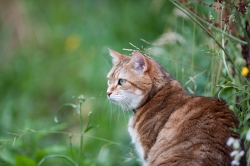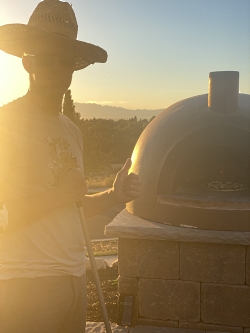
Ed Abbey penned those words waxing elegiac on a barstool in Hoboken, New Jersey. I read them decades later on yellowed pages in a rain-drenched tent somewhere in the Northwoods of Wisconsin. When the rain stopped and summer ended, I enthusiastically disregarded Abbey’s first cautioning. I jumped into my car and rushed to the desert.
Another decade has passed since then, and Utah has become home as I’ve spent those years heeding Abbey’s instructions: walking and crawling over sandstone, through thornbush and cactus, blazing trails with spots of blood, finding and falling in love with places. The Colorado, the Green, the San Juan; Bears Ears, Cedar Mesa, Comb Ridge; Arches, Bryce, Canyonlands, Capitol Reef, and Zion; the named and nameless places in between—the cloven topography where we slogged through flash flood debris, broke through the ice of slot canyon pools, and howled at the setting sun flashing shades of red we’d never seen. After a time, the trails I blazed no longer led to vistas, but to memories.
It’s not just the canyon country I fell in love with, though. I came for the desert, but I stayed for the mountains. And after walking their well-blazed trails, I shambled down the ones overgrown and choked with disuse; and when those ran out, crawled on hands and knees. And I saw things. More importantly, I found something: perspective—of place and of home—perspective gained from the many secrets divulged by mountains and running waters, red rock amphitheaters and alpine meadows. It has been a great privilege to share the stories of those places with you all. They are my love letters to their secrets. My family is off to find and fall in love with new places, now, but I’ll always be Wild About Utah!
Credits:
Photos: Courtesy US National Park Service
Additional Sound: Courtesy & Copyright J. Chase and K.W. Baldwin and Friend Weller
Text: Josh Boling, Edith Bowen Laboratory School, Utah State University https://edithbowen.usu.edu/
Additional Reading Links: Josh Boling Utah A Love Story
Sources & Additional Reading
Abbey, Edward, Desert Solitaire: A Season in the Wilderness, Ballantine Books (January 1, 1971), https://www.amazon.com/Desert-Solitaire-Wilderness-Edward-Abbey/dp/0345326490
Boling, Josh, Author Page, Wild About Utah, https://wildaboututah.org/author/josh-boling-boling/
- Josh’s Pieces:
- Old Ephraim, The Infamous Northern Utah Grizzly, Wild About Utah, Aug 7, 2017, https://wildaboututah.org/old-ephraim-the-infamous-northern-utah-grizzly/
- Tree Talk, Wild About Utah, Feb 27, 2017 https://wildaboututah.org/tree-talk/
- Water-Liquid Life, Wild About Utah, May 23, 2017, https://wildaboututah.org/water-liquid-life/
- The Urban Ecotone, Wild About Utah, Nov 6, 2017, https://wildaboututah.org/urban-ecotone/
- Kokanee Salmon in Utah, Wild About Utah, Oct 9, 2017, https://wildaboututah.org/kokanee-salmon-in-utah/
- Fire, Wild About Utah, Aug 13, 2018, https://wildaboututah.org/fire/
- Wild Cats, Wild About Utah, Dec 10, 2018, https://wildaboututah.org/wild-cats/
- A Desert’s Paradox, Wild About Utah, Dec 15, 2018, https://wildaboututah.org/a-deserts-paradox/
- The Language of Ravens, Wild About Utah, Feb 189, 2018, https://wildaboututah.org/language-of-ravens/
- Wild Children, Wild About Utah, Jan 8, 2018, https://wildaboututah.org/wild-children/
- Wild Neoteny, Wild About Utah, Jul 9, 2018, https://wildaboututah.org/wild-neoteny/
- Josh’s Raven Encounter, Wild About Utah, Jun 11, 2018, https://wildaboututah.org/joshs-raven-encounter/
- Wilderglyphs, Wild About Utah, Mar 30, 2018, https://wildaboututah.org/wilderglyphs/
- Hidden in Plain Sight, Wild About Utah, May 14, 2018, https://wildaboututah.org/hidden-in-plain-sight/
- Greenback Cutthroat Trout, Wild About Utah, Nov 19, 2018, https://wildaboututah.org/greenback-cutthroat-trout/
- Habitat Heroes Explore More Utah Biomes, Wild About Utah, Apr 8, 2019, https://wildaboututah.org/explore-utah-biomes/
- Josh Explains Wild Neoteny, Wild About Utah, Aug 19, 2019, https://wildaboututah.org/josh-explains-wild-neoteny/
- A Solstice Vignette, Wild About Utah, Dec 16, 2019, https://wildaboututah.org/a-solstice-vignette/
- Beaver Creek Greenback Cutthroat Trout, Wild About Utah, Feb 25, 2019, https://wildaboututah.org/beaver-creek-greenback-cutthroat-trout/
- The Henry Mountains’ Bison Herd, Wild About Utah, Jan 14, 2019, https://wildaboututah.org/the-henry-mountains-bison-herd/
- The River, Wild About Utah, Jul 15, 2019, https://wildaboututah.org/the-river/
- The Bear River’s History and Contributions, Wild About Utah, Jun 10, 2019, https://wildaboututah.org/bear-rivers-history-and-contributions/
- Habitat Heroes Explore Utah Biomes, Wild About Utah, Mar 4, 2019, https://wildaboututah.org/utah-biomes/
- Why I Teach Outside, Wild About Utah, Nov 11, 2019, https://wildaboututah.org/why-i-teach-outside/
- Utah’s Desert Paradox, Wild About Utah, Oct 14, 2019, https://wildaboututah.org/utahs-desert-paradox/
- Rock Art, Wild About Utah, Sep 16, 2019, https://wildaboututah.org/rock-art/
- You, Too, Can Teach Outside!, Wild About Utah, Apr 20, 2020, https://wildaboututah.org/you-too-can-teach-outside/
- Brand New Eyes, Wild About Utah, Aug 17, 2020, https://wildaboututah.org/brand-new-eyes/
- Snowshoes and Adaptations, Wild About Utah, Feb 17, 2020, https://wildaboututah.org/snowshoes-and-adaptations/
- The Henry Mountain Bison, Wild About Utah, Jan 20, 2020, https://wildaboututah.org/the-henry-mountain-bison/
- Imaginary Wanderings, Wild About Utah, Mar 16, 2020, https://wildaboututah.org/imaginary-wanderings/
- Questions, Wild About Utah, Mar 22, 2020, https://wildaboututah.org/questions/
- A New Beginning, Wild About Utah, May 25, 2020, https://wildaboututah.org/a-new-beginning/
- Karst Topography, Wild About Utah, Nov 23, 2020, https://wildaboututah.org/karst-topography/
- Wandering Home, Wild About Utah, Oct 19, 2020, https://wildaboututah.org/wandering-home/
- Equinox, or Equilux?, Wild About Utah, Sep 21, 2020, https://wildaboututah.org/equinox-or-equilux/
- Finding Remoteness, Wild About Utah, Feb 22, 2021, https://wildaboututah.org/finding-remoteness/
- Utah: A Love Story, Wild About Utah, May 24, 2021, https://wildaboututah.org/utah-a-love-story/




